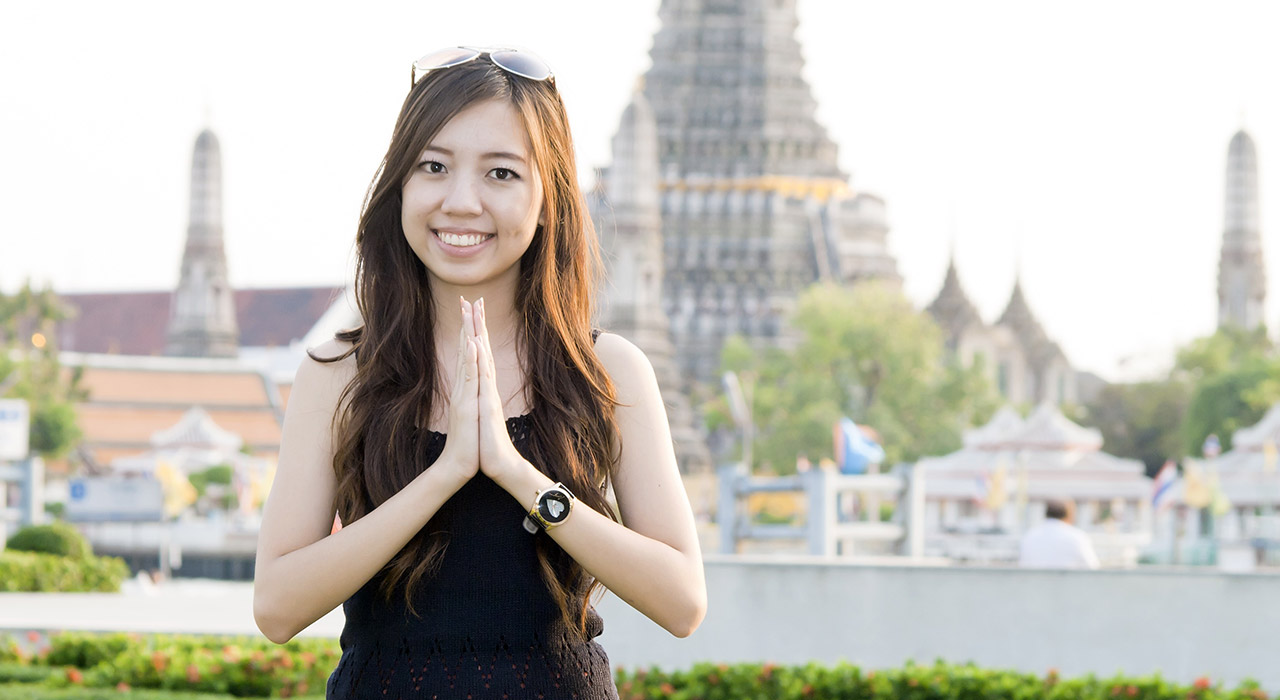How to Say “Hello” in 29 Different Languages
What’s the first word you learn in any language?
“Hello”, of course!
“Hello” is the way you’ll meet new people, make new friends, and start conversations.
Even if you’re not aiming for fluency in a language, just learning this one little word will endear you to any native speakers you meet at home or abroad.
The interesting thing about international greetings is just how different they can be.
In some cultures, people wish one another a good day. In others, they wish each other peace, good health, or blessings. There are certainly a lot more interesting ways around the world to greet others than the simple “hello” used in English!
I’ve researched greetings from around the world to find a variety of ways to say “hello” in different languages.
I included the literal translations of these international greetings in English. Some are cute, some are inspiring, and some are surprising! They all give clues to what’s (perhaps subconsciously) seen as important in different cultures.
Why not learn how to say hello in these (and other!) languages? You’ll give the next native speaker you meet a pleasant surprise, and you might make a new friend.
If you’ve ever wondered “How to say ‘hello’ in French”, “ How to say ‘hello’ in German” or even “How to say hello in Yiddish”, read on.
“Good Day”
In many languages, especially European languages, the standard way to greet someone formally is to wish them a good day. Here are some languages whose formal version of “Hello” translates as “Good day”:
- Romanian: Bună ziua
- French: Bonjour
- German: Guten tag
- Yiddish: אַ גוטן טאָג (a gutn tog)
- Dutch: Goede dag
- Swedish: God dag
“Peace”
Wishing a person peace is a beautiful way to begin a conversation. Many Arabic-influenced languages (as well as others), use “Peace” or “Peace be with you” for “Hello”:
- Arabic: السلام عليكم (al salaam aliykhum)
- Korean: 안녕하세요 (an-nyeong-ha-se-yo)
- Hebrew: שלום (shalom)
- Azeri (Azerbaijani): Salam
- Chechen: Ассаламу Iалайкум or Салам (assalamu aliykhum or salam)
- Hawaiian: Aloha (this is the word for “peace”, “affection”, “compassion”, or “mercy”)
“Good Health”
The historical reasons behind a “good health” greeting are obvious. In ancient times, disease and injury were a constant threat and were often difficult to treat. So it became standard practice in many languages for people to wish good health upon one another each time they met.
- Russian: здравствуйте (zdrastvuytye; comes from здрава желаю meaning “I wish you health”)
- Maori: Kia ora (“Be healthy”)
- Lao: ສະບາຍດີ (sabǎai děe; “you well”, an abbreviation of “Are you well?”)
- Fijian: Bula (“Life” or “Alive”)
- Mandarin: 你好 (nǐ hǎo; “you well”, an abbreviation of ‘nǐ hǎo má’: “Are you well?”)
- Estonian: Tere or Tervist (derived from “terve”, meaning “healthy”)
“Blessings”
Language and religion are often bedfellows. Theravada Buddhist chants are usually conducted in the Pali language. Roman Catholic mass used to be spoken entirely in Latin. Muslims around the world, no matter what their first language, say their prayers in Arabic.
No wonder, then, that this mingling led to religious expressions getting mixed into everyday speech, including, of course, in saying “hello”:
- Irish: Dia dhuit (“God be with you”)
- Tibetan: བཀྲ་ཤིས་བདེ་ལེགས (tashi delek; often translated as “Blessings and good luck”)
- Burmese: မင်္ဂလာပါ။ (mingalaba; “It is a blessing”)
- Hindi (and several other Indian and South Asian dialects): नमस्ते (namaste; “I bow to you”)
“Happiness”
Goodness and happiness are most people’s goals in life, so of course, wishing such fortune upon one’s friends became the customary greeting in some languages.
- Icelandic: Komdu sæll (“Come happy”)
- Thai: สวัสดี (sàwàtdee; from the Sanskrit word “swasti” – which you might recognise as the root of the Sanskrit word “swastika” – meaning “good” or “auspicious”)
“What’s New?”
In some languages, the conventional way to say “hi” is to get right down to business and ask “How are you doing?” or “What’s new?”. These days, however, greetings like this are more correctly interpreted as “hello” and not an actual request for detailed information.
- Kiswahili: Habari yako? (“Your news?”)
- Ojibwe: Aaniin (this is the word for “what” or “how”, an abbreviation of “How are you?” or “What’s up?”)
- French: Ça va? (“It goes?”)
- British English: Alright?
Other Greetings
It’s a diverse world! Not all greetings fit into a neat category. Here are a few languages with more unusual ways to say “Hello”:
- Sesotho: Lumela (this is the word for “believe” or “agree”)
- Georgian: გამარჯობა (gamarjoba; “Victory”)
- Zulu: Sawubona (“We see you”)
- Yapese: Mogethin (“Say a word”)
- Slovak and Czech: Ahoj! (ahoy; from the English phrase, “Ship ahoy!”, which is ironic since both of these countries are landlocked)
- English: Hello (Last but not least! “Hello” comes from the French words “ho” and “là”, meaning “oh!” (or “whoa!”) and “there”, respectively)



Social